by Ken Victor Leonard Hijino
I now have a house in the countryside in Kyoto. Well, it’s kind of the countryside. The house which we bought earlier this year is only a thirty-minute drive from my university and still in the same ward of Kyoto city. It is a depopulating village of some 2,000 people with one convenience store (being the only store open after five pm) and a merged public elementary/junior high school trying to maintain pupil numbers to remain functioning. There used to be a JA which is now closed and a farmers’ market with a popular early Sunday market which draws crowds. Along with renowned Kyoto vegetables, including purple shiso, the village has famous temples and a nunnery with Heian lore, as well as some imperial family burial mounds.
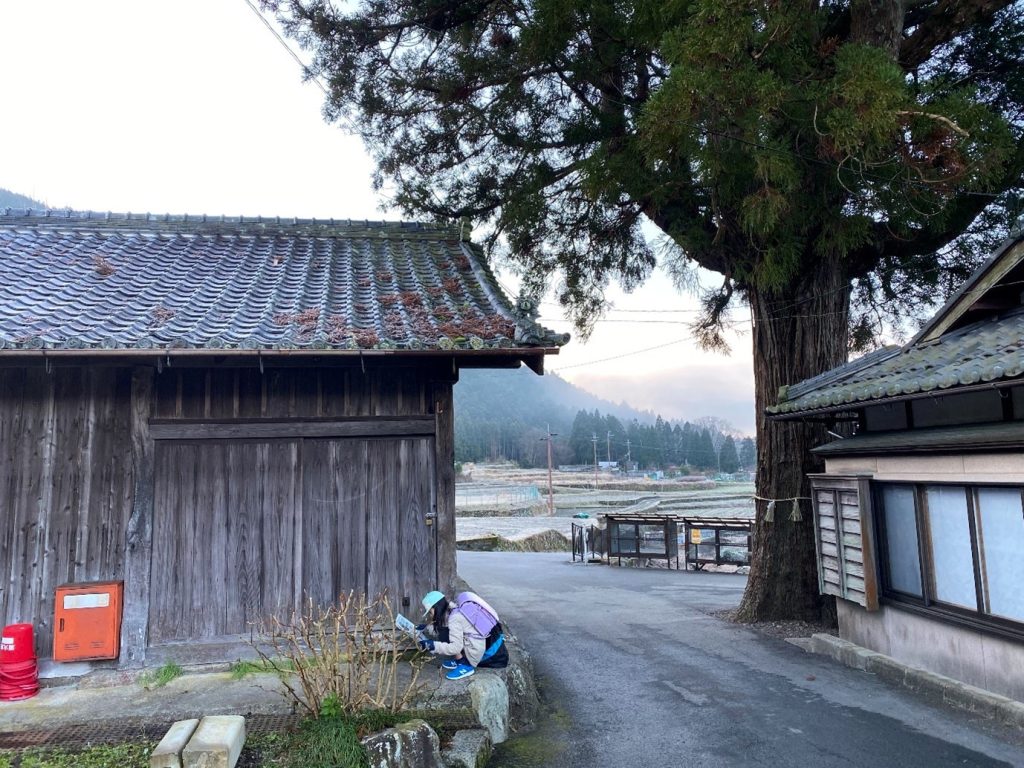
Copyright © Ken Hijino 2024
Our new home is a fifty-year old traditional Japanese-style home with a rock garden. It was built and held by a family whose ancestors were so-called tera-zamurai serving a temple founded in Saicho’s time. The vista from our garden looks down a valley. You see a greenhouse, rice paddies, shiso farms and in the background, in cloudy mornings, black-and-white hills shrouded by mist à la suibokuga. Behind the house, there is a parking lot attached to a local temple for tourists. And further back, densely packed fir forests line up, which were artificially planted decades ago and left unattended to spew dreaded pollen every spring. We moved to the village from our apartment in the city some five years ago, first renting in another of its eight neighbourhoods. Our family’s urban to semi-rural migration was driven for a desire for more space and the chance for our three children to live closer to nature. We were interested by the possibility of sending our kids to the local public school with less than 100 students from first to ninth grade with smaller class sizes and hopefully less stress. We were also inspired by reading blogs of in-migrants to the village, such as that of the lovely organic vegetable farmer couple with two children who became, by luck, our immediate neighbour. Equally important was the satoyama’s relatively uncluttered vistas. Thanks to strict building restrictions, this area has far fewer of the depressing suburbs and architectural eyesores that blight most of Japan. The village is zoned as both a fuchichiku (protecting the natural and traditional beauty of the landscape) and a shigaika choseikuiku (making it almost impossible to build any new buildings).
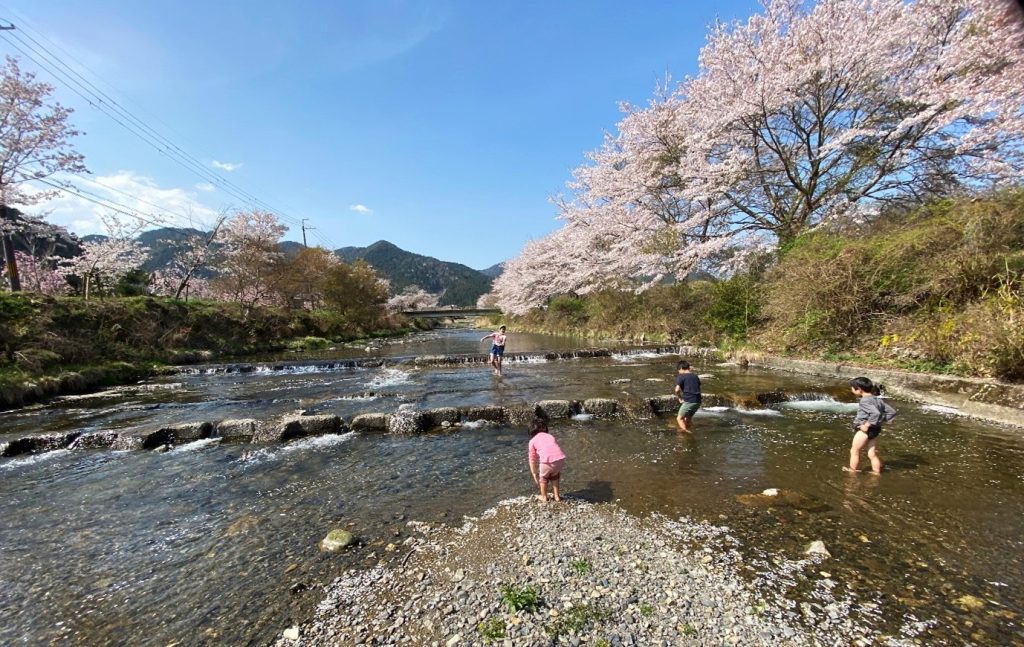
Copyright © Ken Hijino 2024
I remember a friend who visited us, after walking around the village on a magical spring day, who turned to me and simply said: “Ken, this place is just like Totoro’s world.” Indeed, I realized this from watching Miyazaki Hayao’s anime with my three children who have each demanded to see the movie multiple times. We don’t really know what the father who takes his two daughters to live in the rural idyll thinks of village life. But allow me to share some of my impressions since I moved to the countryside. To start out with, and this may be very much cliché, life in the village seems much more social than city life. There is so much more interaction, whether you like it or not, with your immediate neighbours, local neighbourhood association, PTA and parents. These of course exist in the city too, but the smaller scale of everything somehow means you get acquainted with many more of these members and interact more frequently with these overlapping groups. Take a short promenade and you are likely to meet one or a few acquaintances. Not a week passes without somebody sharing with you the season’s vegetable or pickles. During weekends, kids from different houses migrate back and forth between family houses in a movable playdate with little coordination from parents. My wife seems to know the name of most of the kids in the elementary school, their parents, and what they do and where they live.
The village also has many traditional events from communal cleaning and weeding, matsuri, obon, etc. which are hard to avoid. I have done my share of going local too: from bruising my shoulders carrying mikoshi (after plied with drink); shuffling the post-harvest, eighth new-moon dance around a bonfire in the shrine grounds; to rolling cut-up daikon pieces like dice to ward off demons (so I was told). All things I would have never dreamed of doing in my previous city life. These are fascinating traditions and community-bonding events. If you think life in the Japanese countryside is “living the quiet life in serene nature” you will be mistaken. You can choose to have far more solitude and privacy in the city.
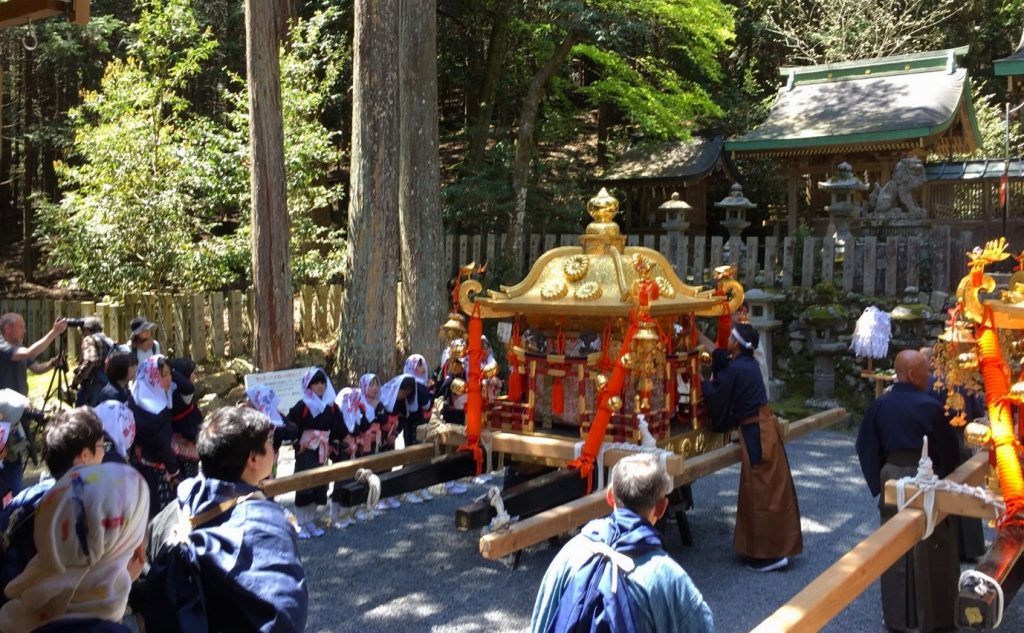
Copyright © Ken Hijino 2023
It’s not just people, but nature that likes to share space with you. We had a masked palm civet – a kind of ferret – running around in our attic (which a local tried to help catch with a trap using convenience store fried chicken as bait – supposedly the convenience store chicken doesn’t rot as quickly as homemade ones so the trap can be used longer…). I’ve almost run over a deer. Our dozen or so experimental blueberries and raspberries have been snapped up in their perfect ripeness by the local birds. And of course, the bugs: I don’t want to even recall the too many close encounters with millipedes. From October to March, the house is infiltrated by countless buzzy kamemushi beetles which burp or fart? (excuse me) cilantro-smelling gas when agitated. Five years in the countryside and, yes, I still don’t like bugs.
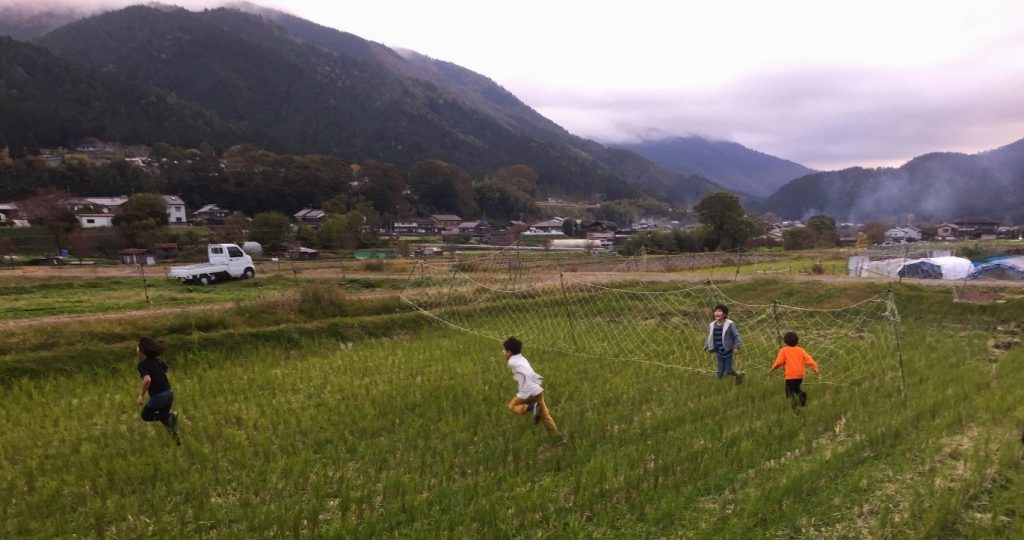
Copyright © Ken Hijino 2023
Another thing about village life is that it seems far less ecological than being in the city, ironically. We burn so much fossil fuel! Shame on us! First is the endless driving. As I heard somewhere, “rurality” can be measured by how many cars each household owns. We only own one, but most families have two or even three vehicles as getting around by bus is impractical. You need to drive to work, shopping, any lessons for kids, even to take a walk (?!). And here I must confess that since there are no large, well-tended parks in the village, I occasionally drive down to the city to walk in a park to enjoy non-farming, non-fir tree forests, vegetation and lawns. Then there is all that fuel you need to keep from freezing in your under-insulated Japanese house. A few moments after shutting off our air conditioners and kerosene stoves, temperatures drop, nose tips chill, and breathe turns white in our rented house. Five years in the countryside and I have not gotten use to the sense of defeat thinking about the wastefulness of standard post-war Japanese housing stock insulation. Hopefully we will insulate our new place more effectively.
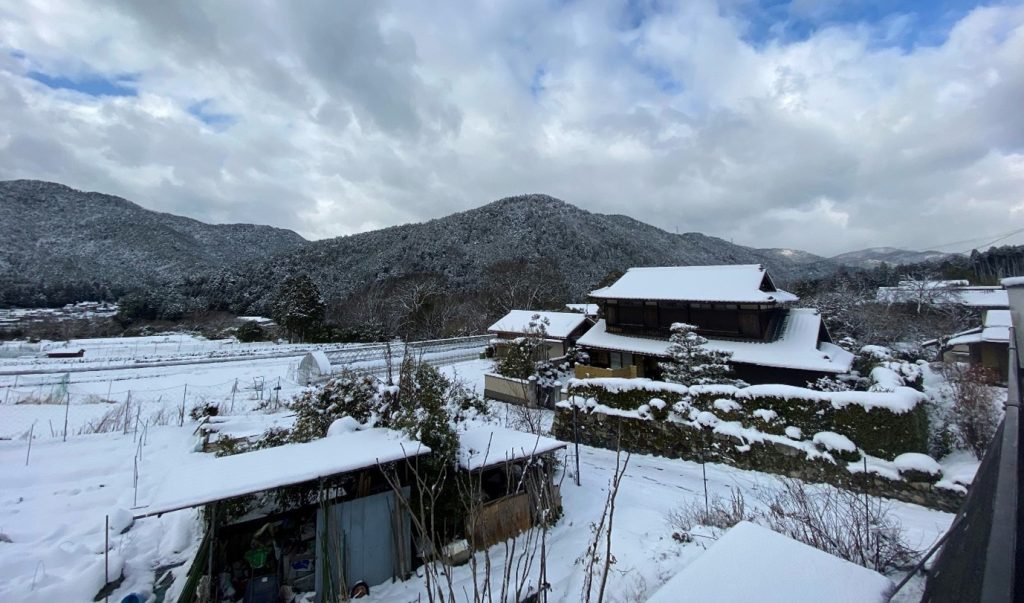
Copyright © Ken Hijino 2023
But despite the bugs, our shamefully un-eco lifestyle, and maybe some semi-inconveniences like not being able to get back home on public transport after 22:00 or no bars and restaurants open after 17:00 in the village, it is a peaceful place. There is plentiful space, clean air, water (we even have our own well), and quiet. Many of the locals and in-migrants are generous and inspiring people who have great pride and affection for the beauty and traditions of the place. Moving here has also been very, very interesting to think about themes like public support of in-migration, property ownership, and social cleavages in a small community. These topics I will address in the following blogs.
Ken Hijino is Professor at the Graduate School of Law at Kyoto University and specializes in party politics and local democracy. He is currently researching the politics of the periphery, focusing on municipal and prefectural level party organizations and campaigning on issues of urban-rural cleavage, depopulation, economic decline, and inter-regional competition and disparity.
